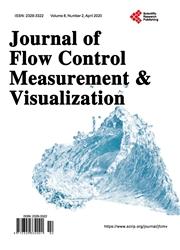Influence of Different Treatment Methods of Neopentane in Natural Gas Components on Measurement Accuracy
引用次数: 0
Abstract
The main sources of domestic pipeline natural gas are central Asia, the Tarim Basin, the Sichuan Basin, and the Zhonghai Oil and Gas Field, etc. Due to the large geographical differences in gas sources, the components of natural gas are quite different. Therefore, accurate analysis of natural gas composition and calculation of the corresponding compression factor is an important part of the natural gas custody transfer process. There is a certain proportion of neopentane in current domestic natural gas, but there are no calculation parameters of neopentane in various corresponding calculation standards, including GB/T 17747/ISO 12213 and AGA 8 standards for compression factor calculation and GB/T 30491.1/ISO 20765-1 and AGA10 standards for sound velocity calculation. However, in theory, the treatment method of neopentane will directly affect the compression factor of natural gas, and then affect the measurement results. Therefore, how to deal with neopentane in natural gas and ensure the accuracy of natural gas measurement results is a problem worthy of study. Generally, there are three ways to deal with neopentane in natural gas: (1) adding neopentane content to isopentane with similar properties; (2) adding neopentane content to n-pentane; (3) to normalize the neopentane content. In order to confirm the influence of the three different processing methods on the measurement accuracy of the flowmeter, the theoretical calculation and actual test verification are used for comparative analysis. The conclusions are as follows: The three treatment methods of neopentane have a certain influence on the calculation results of natural gas compression factor, but the overall influence is small. For the common components of domestic pipeline natural gas, the standard meter method and critical flow Venturi nozzle method standard devices are used to verify the tested flowmeter respectively. The maximum deviations of natural gas compression factor and indication error are 0.00001 and 0.00003%, 0.00001 and 0.00301%, respectively, namely, the different treatment methods of neopentane have little impact on the measurement results. Therefore, as an inherent component of natural gas, neopentane can be treated in the above three ways in trade measurement.天然气组分中新戊烷不同处理方法对测量精度的影响
国内管道天然气的主要来源地为中亚、塔里木盆地、四川盆地、中海油气田等。由于气源地域差异较大,天然气的成分也有较大差异。因此,准确分析天然气成分并计算相应的压缩系数是天然气储集传递过程的重要组成部分。目前国内天然气中有一定比例的新戊烷,但相应的各种计算标准中没有新戊烷的计算参数,包括压缩系数计算的GB/T 17747/ISO 12213和AGA 8标准,声速计算的GB/T 30491.1/ISO 20765-1和AGA10标准。但从理论上讲,新戊烷的处理方法会直接影响天然气的压缩系数,进而影响测量结果。因此,如何处理天然气中的新戊烷,保证天然气测量结果的准确性是一个值得研究的问题。处理天然气中新戊烷的方法一般有三种:(1)在性质相近的异戊烷中加入新戊烷含量;(2)在正戊烷中加入新戊烷;(3)规范新戊烷含量。为了确认三种不同处理方法对流量计测量精度的影响,采用理论计算和实际试验验证进行对比分析。结果表明:新戊烷的三种处理方法对天然气压缩系数的计算结果有一定的影响,但总体影响较小。对于国内管道天然气的常见组分,分别采用标准仪表法和临界流量文丘里喷嘴法标准装置对被测流量计进行了验证。天然气压缩系数和指示误差的最大偏差分别为0.00001和0.00003%,0.00001和0.00301%,即不同的新戊烷处理方法对测量结果影响不大。因此,新戊烷作为天然气的固有成分,在贸易计量中可以采用上述三种方式进行处理。
本文章由计算机程序翻译,如有差异,请以英文原文为准。
求助全文
约1分钟内获得全文
求助全文

 求助内容:
求助内容: 应助结果提醒方式:
应助结果提醒方式:


